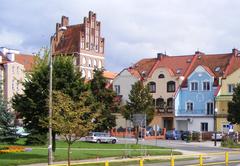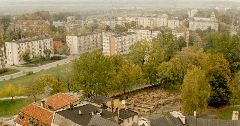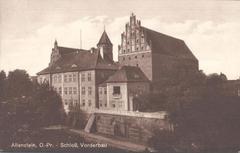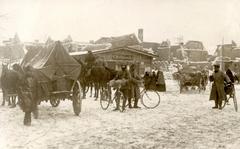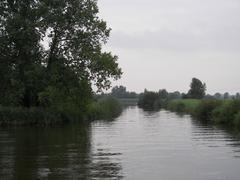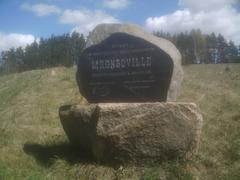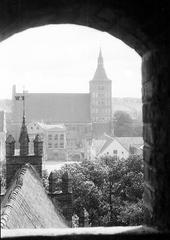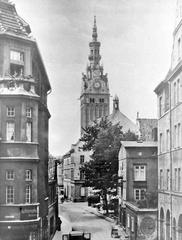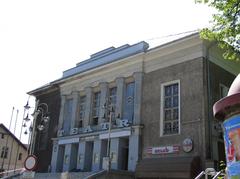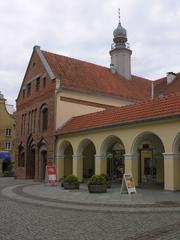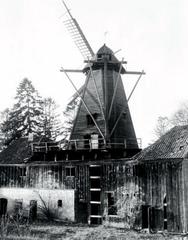Ostróda Visiting Hours, Tickets, and Historical Sites Guide
Date: 14/06/2025
Introduction to Ostróda: Where History Meets Nature
Ostróda, nestled in Poland’s enchanting Warmian-Masurian Voivodeship, is a captivating town known for its harmonious blend of medieval heritage, scenic lakes, and vibrant cultural life. Its strategic location on Lake Drwęckie and proximity to the Elbląg Canal make it a magnet for both history buffs and nature lovers. Anchored by the imposing 14th-century Teutonic Castle, Ostróda has played host to momentous historic events and figures, including Napoleon Bonaparte. In addition to awe-inspiring architecture and museums, Ostróda offers lively festivals, picturesque promenades, and easy access to neighboring attractions.
This guide delivers comprehensive information on Ostróda’s top historical sites, including up-to-date visiting hours and ticket details, advice on travel and accessibility, and tips to maximize your experience in this remarkable corner of Poland. For the latest updates and official information, visit the Ostróda tourism website or StayPoland’s Ostróda page. Enhance your journey with the Audiala mobile app, which provides expert audio guides and curated travel tips (source).
Table of Contents
- Early Origins and Medieval Foundations
- Turbulent Centuries: Invasions, Wars, and Rebirth
- Ostróda in the 20th Century: World Wars and Shifting Borders
- Key Historical Sites and Attractions
- Travel Tips and Accessibility
- Nearby Attractions
- Culture, Events, and Heritage
- Practical Visitor Information
- Frequently Asked Questions (FAQ)
- Conclusion and Resources
Early Origins and Medieval Foundations
Ostróda’s history stretches back to the Old Prussian Pomesanian tribe, who settled the fertile land near the Drwęca River. The foundation of a wooden watchtower by the Teutonic Knights around 1270 marked the town’s early transformation into a fortified settlement. In 1329, Ostróda (then “Osterode”) received town rights, and a brick Gothic castle soon replaced the original structure, establishing Ostróda as a regional administrative and military hub.
Turbulent Centuries: Invasions, Wars, and Rebirth
The 17th century brought invasions and devastation, including Tatar raids in 1656 and Swedish attacks during the Northern Wars. Despite these setbacks, Ostróda rebuilt and flourished as a center of Polish culture in East Prussia, thanks to local leaders and institutions dedicated to preserving national identity.
Ostróda in the 20th Century: World Wars and Shifting Borders
Ostróda played a significant role during World War I, serving as headquarters for General Hindenburg’s 8th Army during the Battle of Tannenberg. The town underwent dramatic changes in the 20th century, especially after widespread destruction during World War II. Post-1945, Ostróda was incorporated into Poland and saw significant demographic and cultural shifts.
Key Historical Sites and Attractions
Ostróda Castle (Zamek w Ostródzie)
The Teutonic Castle is Ostróda’s premier historical site. Built in the 14th century by the Teutonic Order, it served as both a fortress and administrative center. The castle’s storied past includes hosting Napoleon Bonaparte as his headquarters in 1807. Today, the castle houses a museum with medieval artifacts, exhibitions on the region’s history, and cultural events year-round.
Visiting Hours:
- April to October: 10:00 AM – 6:00 PM (last admission 5:30 PM)
- November to March: 11:00 AM – 4:00 PM (weekends only)
Tickets:
- Adults: 15 PLN
- Reduced (students, seniors): 10 PLN
- Children under 7: Free
Tickets are available at the entrance or online via the official museum website. Guided tours (in Polish and English) are available daily at 11:00 AM and 2:00 PM; advance booking is recommended during peak seasons. The castle’s main exhibition areas are accessible, though some historic sections involve stairs.
Other Notable Landmarks
St. James’ Church
A Gothic jewel near the castle, open daily from 9:00 AM to 6:00 PM with free admission.
Evangelical-Methodist Church of Divine Grace
A Neo-Gothic church with twin towers offering panoramic views. Free guided tours are available on Saturdays during summer.
Czarnieckiego Street & Old Town Center
A vibrant area featuring pre-war architectural recreations, cafes, and fountains, ideal for leisurely walks and sampling local cuisine.
Museum of Nature
This family-friendly museum highlights the region’s flora, fauna, and geology. Hours align with the castle; tickets are included with castle admission.
Lake Drwęckie and Elbląg Canal
Lake Drwęckie is Ostróda’s largest lake, renowned for water sports, marinas, and a lively promenade. The Elbląg Canal, a 19th-century engineering marvel, offers unique boat trips where vessels traverse overland slipways.
Travel Tips and Accessibility
- Getting There: Ostróda is accessible by train and bus from Olsztyn, Gdańsk, and Warsaw. Ample parking is available near main attractions.
- Getting Around: The town is walkable; bike rentals and taxis are widely available.
- Accessibility: Ostróda Castle and major museums have ramps and adapted restrooms. Some historic sections remain less accessible due to stairs or uneven surfaces.
- Photography: The castle tower, promenade, and local churches provide excellent photography spots.
Nearby Attractions
- Grunwald Battlefield (28 km): Site of the historic 1410 battle, featuring a museum and annual reenactments.
- Malbork Castle: The world’s largest brick fortress, a UNESCO World Heritage site.
- Masurian Lake District: Offers exceptional opportunities for sailing, kayaking, and relaxation.
Culture, Events, and Heritage
Ostróda’s layered history is celebrated through architecture, museums, and festivals. The annual Ostróda Reggae Festival and Grunwald Battle reenactments attract visitors from across Europe. Seasonal walking tours and cultural events occur throughout the year, especially in summer.
Practical Visitor Information
| Attraction | Visiting Hours | Ticket Prices | Accessibility |
|---|---|---|---|
| Ostróda Castle | Apr–Oct: 10:00–18:00; Nov–Mar: 11:00–16:00 (weekends) | Adults: 15 PLN; Reduced: 10 PLN | Wheelchair access to main areas; assistance on request |
| Museum of Nature | Same as castle | Included with castle ticket | Same as castle |
| St. James’ Church | 9:00–18:00 | Free | Partial |
| Evangelical-Methodist Church | 9:00–17:00 (summer Saturdays tours) | Free | Limited |
- Language: Polish is primary; English and German are spoken in tourist areas.
- Currency: Polish złoty (PLN); cards widely accepted.
- Safety: Ostróda is generally safe; dial 112 for emergencies.
- Best Time to Visit: Late spring to early autumn for festivals and outdoor activities; winter for quieter visits and wellness retreats.
Frequently Asked Questions (FAQ)
Q: What are Ostróda Castle’s visiting hours?
A: April–October, 10:00 AM–6:00 PM; November–March, 11:00 AM–4:00 PM (weekends only).
Q: How do I buy tickets?
A: Tickets are available at the castle entrance or online via the official museum website.
Q: Are guided tours available in English?
A: Yes, guided tours in Polish and English are available daily.
Q: Is Ostróda family-friendly?
A: Absolutely. The town offers playgrounds, water sports, and family-oriented museums.
Q: How do I get to Ostróda?
A: Convenient train and bus connections from Olsztyn, Gdańsk, and Warsaw.
Q: Are there special events at Ostróda Castle?
A: Yes, including historical reenactments, cultural festivals, and concerts.
Conclusion and Resources
Ostróda is a destination where Poland’s rich medieval heritage, natural wonders, and vibrant contemporary culture converge. From exploring the Teutonic Castle and scenic lakes to participating in lively festivals and savoring local cuisine, Ostróda promises an experience that combines the best of history and modern leisure.
For the latest information on visiting hours, ticketing, and special events, consult these official resources:
Plan your visit today by using these resources and the Audiala app for expert-guided tours, interactive maps, and real-time updates. Follow Ostróda on social media for inspiration and the latest travel news.
Sources
- Exploring Ostróda: Your Ultimate Guide to Visiting Warmian-Masurian Historical Sites, 2024 (Ostróda Tourism)
- Visiting Ostróda Castle: Hours, Tickets, and Historical Attractions in Warmian-Masurian Voivodeship, 2024 (StayPoland)
- Ostróda Historical Sites: Visiting Hours, Tickets, and Top Attractions, 2024 (Ostróda Tourism)
- Essential Visitor Tips for Ostróda: Visiting Hours, Tickets, and Attractions, 2024 (Ostróda Tourism)
